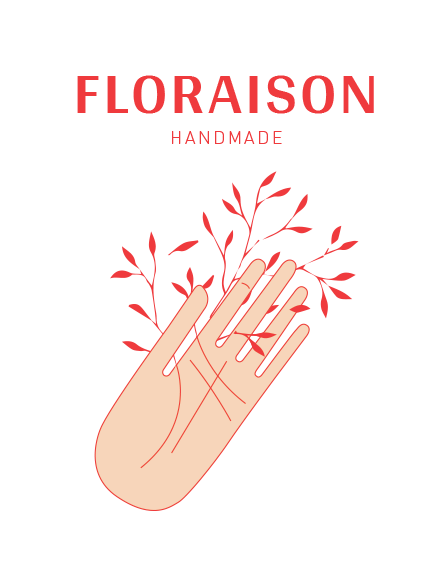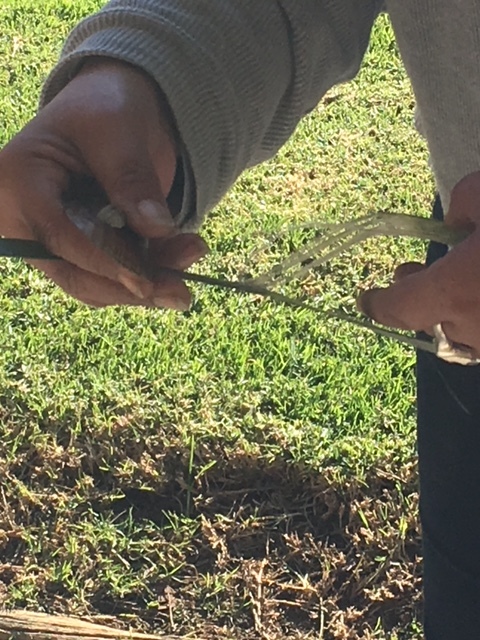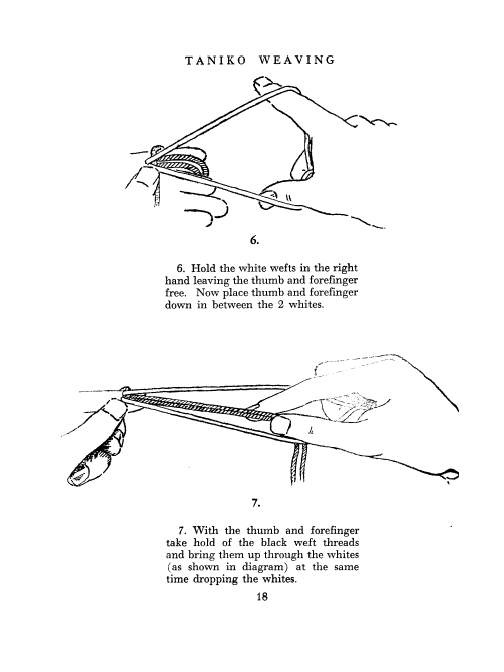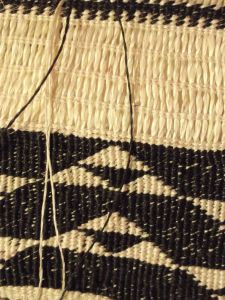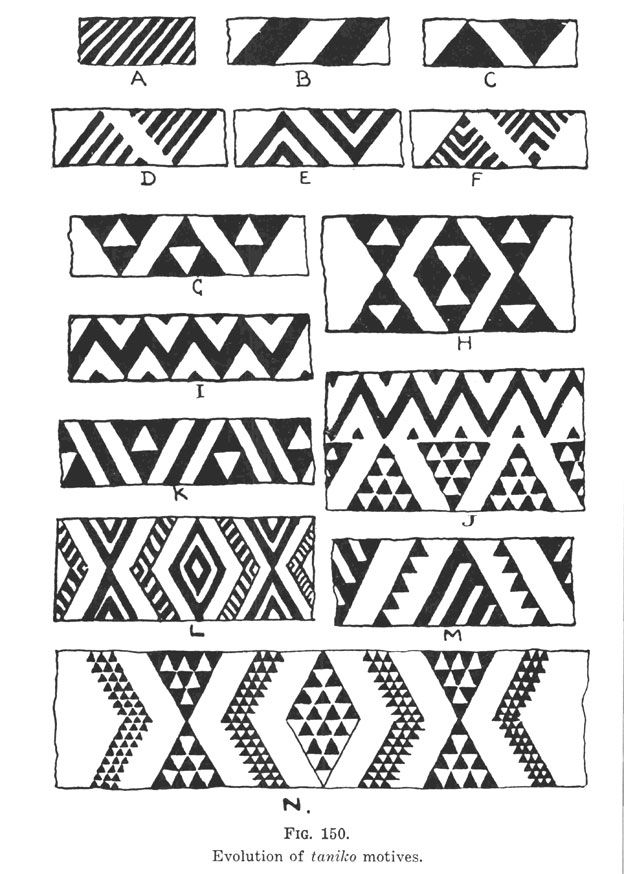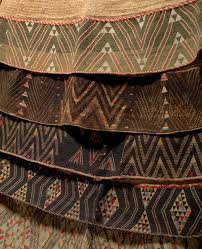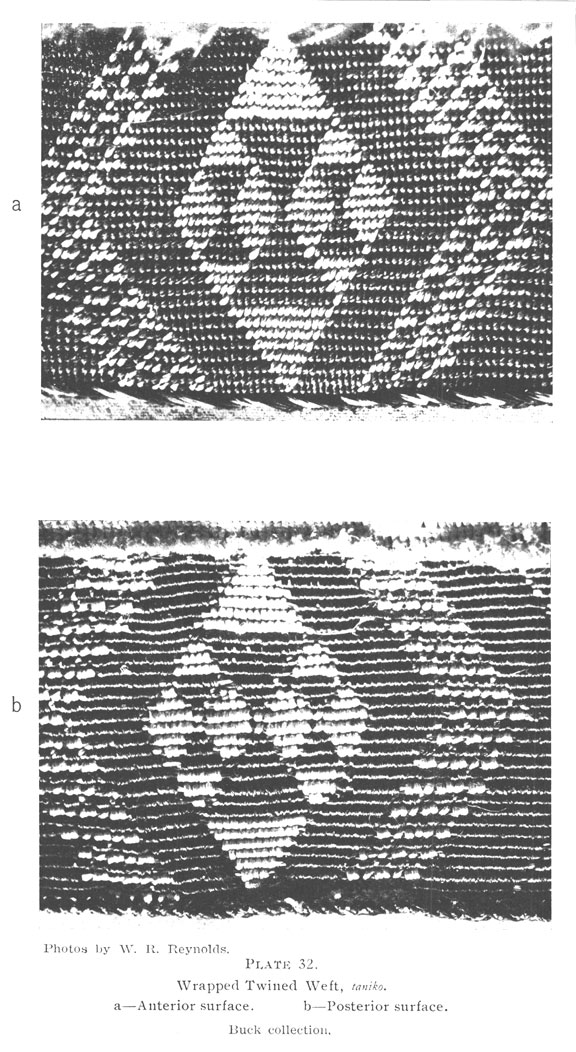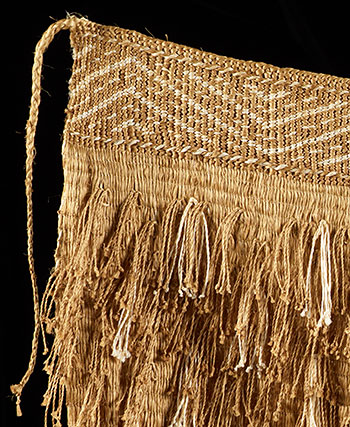Taniko, Maori's weaving technique
Māori woman weaving taniko, n.d., Thomas Pringle photographs (MB1093, Ref 5583). Macmillan Brown Library, Christchurch, New Zealand.
ENGLISH VERSION BELOW
Fraîchement arrivée à Auckland, j’ai décidé de prendre un cours de Tāniko avec l’association Handweavers Guild et Jackie Pako, une tisseuse Maori, comme enseignante. Il s’agit d’une technique de tissage traditionnelle Māori , qui consiste à “tordre” par alternance les fils de trame autour des fils de chaîne. En anglais, le terme est weft-twining. Tāniko peut aussi faire référence aux bandes de tissage ou encore aux motifs traditionnels géométriques.
-
Freshly arrived in Auckland, I’ve decided to take a Tāniko class with the Handweavers Guild association and Jackie Pako, a Maori weaver as tutor. Tāniko is a traditional weaving technique of the Māori of New Zealand related to "twining". It may also refer to the resulting bands of weaving, or to the traditional geometric designs.
On parle aussi de "Finger weaving", car cette technique ne nécessite pas de métier à tisser. On peut tisser seulement avec les doigts, ou pour supporter une large pièce de tissage, on peut tendre un fil entre deux piquets, et y suspendre les fils de chaîne.
Le tissage Tāniko (ou Whatu, un autre terme pour désigner cette technique) est traditionnellement effectué avec une fibre naturelle que l’on nomme Muka. La préparation de cette fibre peut prendre jusqu’a trois mois, c’est donc une fibre très précieuse et noble.
La Muka est extraite de la plante Harakeke, le fameux lin de Nouvelle-Zélande (New Zealand flax).
La technique de tissage Whatu est traditionnellement utilisée pour faire des Korowai, des capes et vêtements tissés.
-
We also speak of "Finger Weaving" because this technique does not require a loom. One can weave with the fingers, or to support a large piece of weaving, two pegs were pounded into the ground and a line of thread stretched between them. The Tāniko weaving (or Whatu, another term for this technique) is traditionally made with a natural fibre called Muka. The preparation of this fibre can take up to three months, so it’s a very precious and noble fibre.
The Muka is extracted from the Harakeke plant, the famous New Zealand flax.
The Whatu technique is traditionally used to make Korowai, woven cloaks and garments.
Jackie Pako is cutting Harakeke leaves for Muka fibre’s preparation.
She lightly incises the leaf in different places.
Using the edge of a mussel shell, she scrapes carefully the leaf.
Muka is stripped from inside the leaves and rolled into thread.
Attention toutefois à ne pas couper n’importe quelles feuilles du Harakeke au risque de tuer la plante. On peut couper seulement les feuilles qu’on appelle “grand-parents” et qui se trouve le plus éloignées du coeur de la plante. Les autres feuilles qu’on appelle “enfants” et “parents” sont plus jeunes.
> La fibre Muka est enlevée de l'intérieur des feuilles et ensuite roulée en fil.
-
However, be careful don’t cut any leaves of Harakeke at the risk of killing the plant. You can cut only the leaves called "grandparents" and which is farthest from the heart of the plant. The other leaves called "children" and "parents" are younger.
> Some Taniko designs
Alors, bien sûr, pendant notre cours d’initiation à la technique nous avons utilisé des fils mercerisés.
-
So, of course, during our introduction to Taniko technique we used mercerized threads.
“Weaving is more than just a product of manual skills. From the simple rourou (small food basket) to the prestigious kahu kiwi (kiwi feather cloak), weaving is endowed with the very essence of the spiritual values of the Maori people. The ancient Polynesian belief is that the artist is a vehicle through whom the gods create.”
An interview with Māori weaver and artist Erenora Puketapu-Hetet (1941-2006). She discusses her life as a weaver in an interview recorded by Te Papa National Museum, New Zealand, in 2006.
Si vous souhaitez en savoir plus sur l’art du tissage Maori, je vous recommande vivement ce livre.
-
